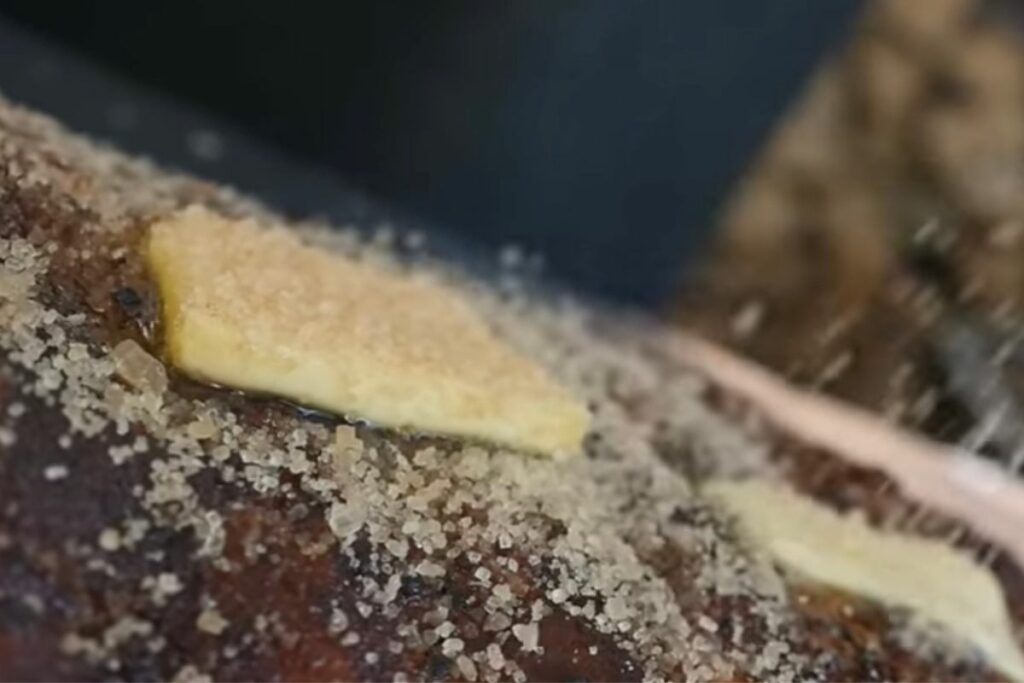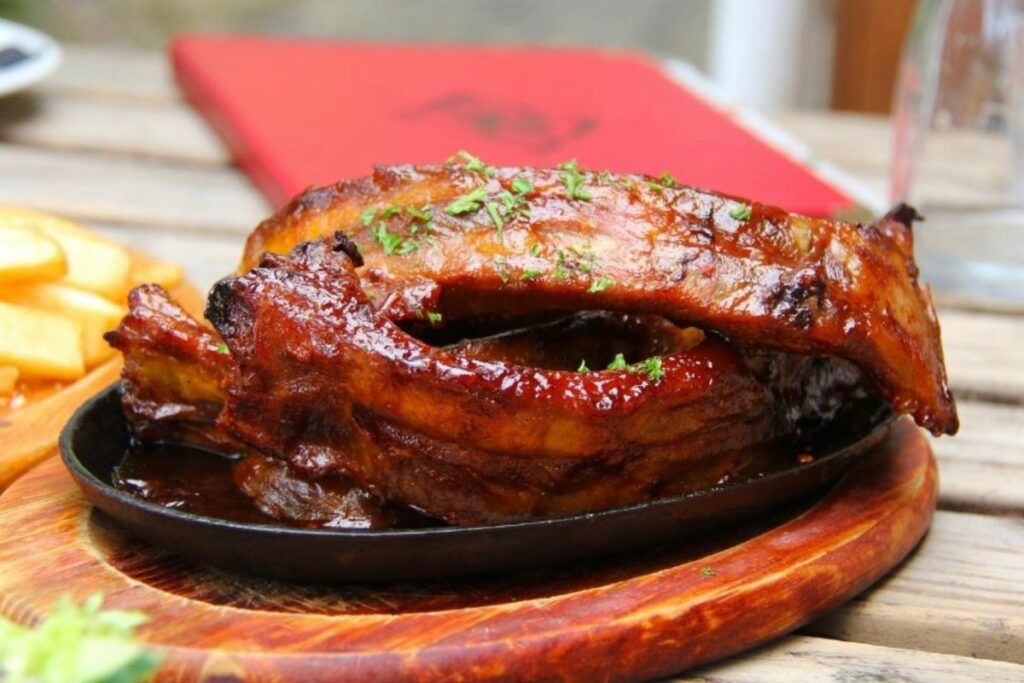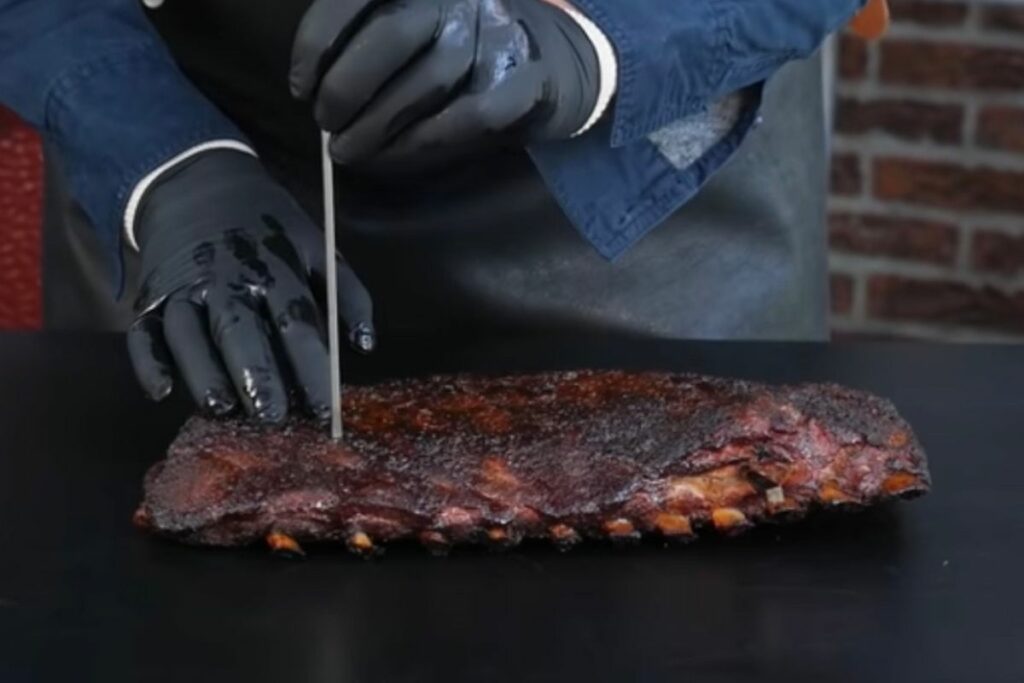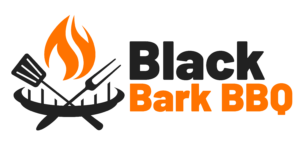Due to the thin meat and bones of ribs, a meat thermometer isn’t much use when it comes to telling if your ribs are done. But just because you can’t get the exact temperature of the meat, that doesn’t mean you’re completely in the dark.
There are a few ways to tell that your ribs are done, and it’s mostly down to personal preference which one you decide to go with. The following article will outline these methods, as well as other tips and tricks for grilling ribs.

How To Tell If Your Ribs Are Done
With some other meats, knowing that they’re fully cooked can be as simple as assessing the color, or shape. While things like color are definitely also a factor when it comes to ribs (they should be mahogany when ready), there are a variety of surefire methods to tell if your ribs are done.
One of the most popular methods for trying to tell when your ribs are done is the bend test, also known as the bounce test. All this test involves is picking up the slab of ribs by the center with a pair of tongs. Bounce them slightly, and if they’re ready, your slab will bow until the meat begins to crack at the surface.
If the crack is only small, the ribs probably need a little more time, but if they’re close to breaking, that’s how you know they’re ready. It can be hard to tell the difference between a small crack and the cracks that indicate the ribs are done, but with some practice, it’ll come naturally.
Another test you can use is a simple taste test. If you’re already confident that your ribs are ready, you can just pull off a bone (which will also give you a better look at the meat), and taste it.
Obviously you should only be doing this once you’re reasonably sure that the ribs are ready. And try not to use this test as an excuse to eat all the ribs before your guests can get to them!
You can also try the twist test, which involves grabbing a bone in the middle of the slab and twisting it. If the bone breaks free, the connective tissues have turned to gelatin, meaning the ribs are ready.
Cutting into the ribs is another way to tell if your ribs are done. If the meat in the middle is white, and there’s no pink juices, you’ve likely got yourself some ready ribs right there.
It should be noted that if you’re cooking with smoke, it’s normal for there to be pink meat around the surface of the ribs. As long as the meat in the center is a white or tan color, the ribs are ready.

Yup, there’s still more tests! This one uses a literal toothpick. Simply poke a toothpick in the meat between the bones, and if it slides right in without resistance, the ribs should be done.
To be extra sure the ribs have been cooked to your liking, you can perform this test on as many parts of the slab as you want. Some barbequers actually prefer this method to the bend test. Just be careful you don’t burn your fingers.
One test you might have heard of that’s not really recommended is the popup test. The theory of this test is essentially that when the meat starts to pull back from the bones, exposing around a quarter inch of bone, this ‘natural popup’ means that they’re ready. But this isn’t strictly the case.
The shrinkage of ribs can occur within an hour on a hot grill, and that doesn’t necessarily mean they’re anywhere close to ready. It’s best to stick with the other methods on this list when trying to determine whether your ribs are ready. We’d most recommend the bend test.
How Long Does It Take To Cook Ribs?
While most barbequers prefer the aforementioned methods when it comes to telling if their ribs are done, it’s also possible to just go with timings, like you would if you were cooking meat in an oven.
For pork ribs, you should be cooking the meat at 225 degrees Fahrenheit, whether on your grill or on your smoker. If you’re cooking baby back ribs, you should be looking at somewhere between three to four hours. St Louis ribs tend to take longer, usually somewhere between 5 to 6 hours.
Once the timings have been met, though, you’re not quite done. Afterwards, it’s recommended that you cover the rack with barbecue sauce before cooking on a high heat for 10 more minutes.
This allows the sauce to work its way into the ribs. You’re essentially first allowing the ribs to gradually get to their ideal internal temperature before hitting them with a blast of heat to finish them off.
While judging by timings tends to provide solid results, there are a variety of factors to consider when judging how well done your ribs are, and these can be more accurately pinpointed using the more practical methods we previously listed.
Different Types Of Ribs
There are five different types of ribs: pork back ribs, pork spare ribs, country style pork ribs, beef back ribs, and beef short ribs. Before cooking any kind of ribs, it’s important to know the differences between each type.

Pork Back Ribs (Also Known As Baby Back Ribs)
Pork back ribs come from the high part of the back of the pig, where they meet the backbone. They’re found in bone-in pork rib loin chops, although the loin has been removed so it’s just a rack of ribs.
Pork back ribs require slow cooking, due to their large amounts of connective tissue and cartilage. This can be done using either moist heat (for example, a slow cooker), or with dry heat (using a smoker or a grill).
A rack of pork back ribs tends to hold somewhere between 8 and 13 ribs, and are usually 3 to 6 inches wide. There’s a slight curve to them, because they wrap around the loin.
Pork Spare Ribs
Pork spare ribs are the lower section of the ribs that extend from the belly around to the sternum. Since they come from the belly, they’re fattier than pork back ribs, as well as flatter. A rack of spare ribs will probably have between 11 to 13 ribs, and will be 6 to 8 inches wide.
The meat on these ribs will be tougher than the meat on pork back ribs, because the muscles surrounding them contribute to the breathing, and are therefore used more. They also contain more cartilage. As with pork back ribs, they’re best cooked at a slow pace.
Country Style Pork Ribs
The specifics of country style pork ribs can vary, unlike pork back ribs and pork spare ribs. There’s a few kinds of pork that are sold under the ‘country style’ moniker. Their definition, although quite a broad one, is that they’re pork rib chops from the front of the loin, near the shoulder.
They have a narrow portion of rib bone with meat attached, as well as a narrow portion of feather bone, also with meat attached. You also get boneless country style ribs, which are just long strips of the loin muscle and the meat from between the ribs.
Beef Back Ribs
Beef back ribs come from the upper carcass, and are the ribs found in ribeye steaks and in prime rib. They’re mostly just fat and bone, with not much cartilage nor meat. Not a lot of taste, and this is usually concealed by barbecue sauce.

Beef Short Ribs
Beef short ribs are from the lower ribcage. Tough, and heavy with connective tissue, these ribs hold a fair amount of meat. They’re called short ribs because they’re usually cut a lot shorter than pork spare ribs- we’re talking between 3 and 4 inches, sometimes shorter.
Slow cooking is, again, the recommended method for preparing this type of ribs, specifically braising. Beef short ribs are perfect for beef stew, soup, or certain chilis.
Frequently Asked Questions
Should Ribs Fall Off The Bone?
Nope! If you’re new to grilling, it’s important not to make this assumption. If your ribs have been cooked properly they should not fall off the bone.
The only exception to this rule is ribs that have been steamed and boiled, and this method isn’t really recommended by barbecuers, as it tends to rob them of most of their flavor and give the ribs an unpleasant, mushy texture.
If your ribs are done, they’ll pull quite easily off the bone with your teeth or with a fork, but they should still have some chew.
What Are The Leanest Cuts Of Pork?
Many cuts of pork are considered lean, or as being extra lean sources of protein. Generally, though, the leanest cuts tend to come from the loin.
What Ribs Should I Cook For A Group?
If you’re having a big barbecue, baby back ribs are most recommended. They’re smaller, which means they’re easier to handle as finger food.
Conclusion: How To Tell If Ribs Are Done
As you’ll now be aware, there are a bunch of different methods you can use to tell if your ribs are ready. The most popular method of these is the bend test (or bounce test), but the other methods aren’t without their benefits. When it comes to cooking ribs, it’s all about practice.
- Is Blue Steak Safe To Eat? - May 7, 2022
- How To Tell If Your Bratwurst Sausage Is Cooked - May 7, 2022
- The Internal Temperature For Tri Tip When Done - May 7, 2022









